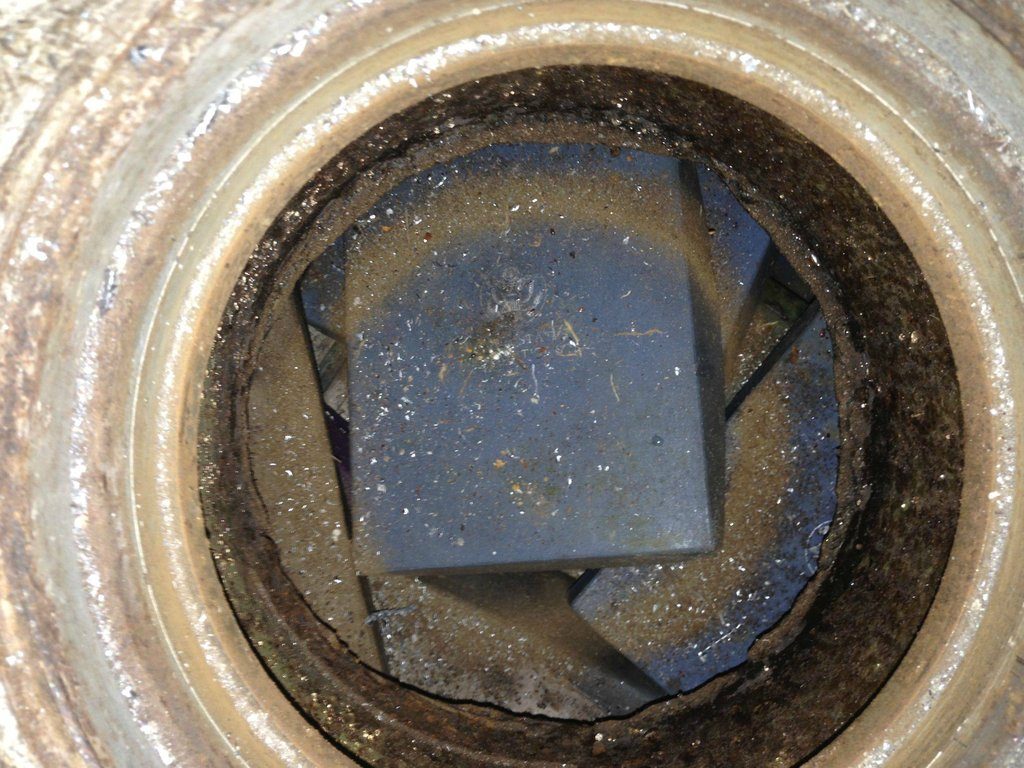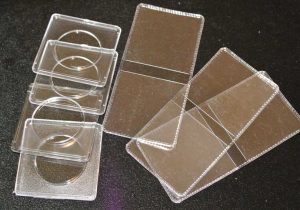A reader with questions recently reminded me of a previous version of this article. After reading what I wrote, I noticed a few things that required editing along with some additional information I could add. Rather than keep this to myself, I am sharing so that it can also serve as a reminder to everyone about proper storage.
After putting in the time, effort, and resources to assemble your collection do not just throw it in a draw or closet. Coins, currency, tokens and medals can become damaged if not stored properly. It would be a shame if your collection is damaged when a little effort can keep your collection preserved.
Storing a collection is a matter of dealing with two factors: using archival safe storage materials and the environmental factors of where your collection is stored.
Archival Safety
 All coins, medals, tokens, and currency are made from materials that will react with the environment. Metals will oxidize and tone, some with patterns that intrigue collectors. Paper-based materials can be made from cotton rag or linen that may not break down the same way as paper but can be damaged in a way that will affect its value. The key to storing your collection is to use products made from archival safe materials. Archival safe materials are those made that are not acidic, materials that do not turn acidic over time, or materials that are not too alkaline.
All coins, medals, tokens, and currency are made from materials that will react with the environment. Metals will oxidize and tone, some with patterns that intrigue collectors. Paper-based materials can be made from cotton rag or linen that may not break down the same way as paper but can be damaged in a way that will affect its value. The key to storing your collection is to use products made from archival safe materials. Archival safe materials are those made that are not acidic, materials that do not turn acidic over time, or materials that are not too alkaline.
Acid free means that the pH (potential Hydrogen) measure is 7.0 or less. A pH measure of 7.0 is neutral and greater than 7.0 is basic or alkaline. Although acidic materials will damage your collection, materials too alkaline will also cause damage. Those that produce acid free supplies with materials that is as close to being pH neutral as possible.
It is possible for some materials to be acid free without being archival safe. These are substances that can breakdown over time and become acidic. For example, commercially made paper contains lignin, a bonding elements that naturally occurs in the pulp that helps holds the wood fibers together. While lignin is not acidic it gives offs acids as it deteriorates. To prevent lignin from becoming acidic it must be treated. This treatment involves dipping the paper in a solution that neutralizes the natural lignin.
Another storage item to stay away from are plastic products made from polyvinyl chloride (PVC). PVC is a inexpensive plastic that is used as an additive to other plastics to make softer, more flexible products. One example of a numismatic product that can be made using PVC are the two-pouch coin holders called flips where each pouch is 2-inches square. PVC in itself is neutral but gives off an acidic gas in reaction to atmospheric conditions. The PVC gas will not only react with the coins but will deteriorate the plastic. The result will be a green or gray streaks or blob appearing on the coins.
The gas produced by deteriorating PVC will damage the surface of the coin. Once a coin is damage by PVC it cannot be reversed. There are ways to conserve coins that are damaged by PVC as long as the PVC contamination is discovered early and is only on the surface. Once it mars the surface, the coin is permanently damaged and its value diminished.
When purchasing plastic or clear storage items, hard plastics or those made of Mylar are the best choice. Capsule manufacturers use a neutral plastic that does not contain PVC while those that make archival safe 2×2 flips use Mylar. The makers of 2×2 cardboard holders also use Mylar over the cutouts while album manufacturers use Mylar to make the cover sliders found in albums.Some people like to buy older albums because of they are unique and have a classic look. Those albums may not be made of archival material including paper with active acid from the deteriorating lignin that was not neutralized during manufacture because this was not a concern. Also, cover sliders could be made of PVC or other plastics that are not neutral. If you are not sure whether that used album is safe, it is best to buy a new archival safe album.
Although this discussion centered on coins, the same can be said for currency storage. The only difference will be the size and types of holders.
Environmental Factors
You can use the most archival safe materials but they will not protect your collection from environmental factors. The general rule of thumb is to stay away from the extremes. Do not store your collecting in a place that is too hot or too cold. Try not to store your collection in a place that is too humid or too dry since both could cause your storage materials to react. In other words, the average home with a temperature of 64-78 degrees with an average humidity of 30-percent should not be a problem.
Those living in colder areas where the home heater is being used longer than other areas of the country may have to compensate. Forced air heating systems tend to dry the air that could cause damage to your collection. If you use a humidifier, whether built in to your heating system or a standalone unit, you might consider investing in a hygrometer to keep the relative humidity between 30 and 40-percent.
Where you store your collection also has to be a concern. If you keep your coins in a cabinet, the gasses from the wood and even the paint or stain can cause damage. While wooden cabinets are attractive and practical, you do not want to store your collection some place that could add to the environmental concerns.
Metal cabinets are a better option. Safes and safety deposit boxes in temperature controlled vaults also makes great storage options aside from being able to keep your collection secure.
One of the factors that could cause wood rot in cabinets is excess humidity. If the humidity in your home or where you store your collection cannot be controlled, you should use a desiccant. A desiccant is a substance able to absorb moisture in the air. Two common desiccants are silica gel, the little packets that you see in some packaging, and montmorillonite clay.
Choosing which desiccant to use depends on your situation. If your storage area is not that humid, use silica gel. It well suited for lower moisture area over a longer period of time, about six months. For high humidity areas, use a clay desiccant. Although it will not last as long as silica gel (about three months), clay is more effective at removing moisture where the humidity is higher. Another option is to use a combination, especially during seasons of high humidity. You can purchase silica gel and clay desiccants at many hobby stores and stores that sell collecting supplies.
While there are other types of desiccants, they are not recommended for use around collectibles. Calcium sulfate and calcium chloride uses sulfur and chlorine, both will not react well with the metals of your coins. Activated charcoal can add carbon dust to the air, which can attach itself to your coins. Some have suggested using salt as a desiccant. Salt is made of sodium chloride that would also introduce metal damaging chlorine into the environment.

Not all safes are safe for coin storage. Click on the image to read the story about a safe found in the house of the writer’s late grandfather.
Choosing Storage Products
If you buy products made by a reputable manufacturer that advertise them as archival safe then the only difference between products are the way your coins will be displayed.Albums are popular for raw coins collected in the published series. You can find albums for many series from different manufactures to suit your tastes. Each manufacturer has its own distinct color and style. The difference is your personal preference.
Coins that have been encapsulated by third-party grading services may present different issues for storage and display. While there are a few manufacturers that make a special page to fit the grading service’s holders, collections made up of coins encapsulated by different grading services can be stored in boxes.
When storing grading service holders it is important to remember that the holders are not considered airtight. Third party grading services uses sound waves to melt the halves of the plastic holder to bond them without using chemical adhesives. While this type of sonic seal is strong, it can be subject to breaking if the encapsulated coin is mishandled. Additionally, whatever contaminants were in the air around the time the slab was sealed would be trapped with the coin.
Although most encapsulated coins could be stored in a standard plastic case, those who want extra protection should consider storing the slabs in special archival quality inserts or polyethylene bags.
When storing your collection you can use the same archival quality containers that are used by organizations like the United States Archives or Library of Congress. Although many of the containers may be coated with an alkaline buffer should not be a deterrent. Since your coins are in another holder, whether encapsulated or within an album, the buffer will maintain a barrier between your collection and the storage box that should not hurt your coins.
Although proper storage of your prized collection is important, do not make it more important than your collection. Be careful how you store these items but do so in a way you can still enjoy what you collected.
- Collecting starter bundle image found at Amazon.com
- Holder image courtesy of Public Storage
- Safe image courtesy of messynessychic.com
- Image of old coin albums courtesy of Specialty Stamp & Coin



